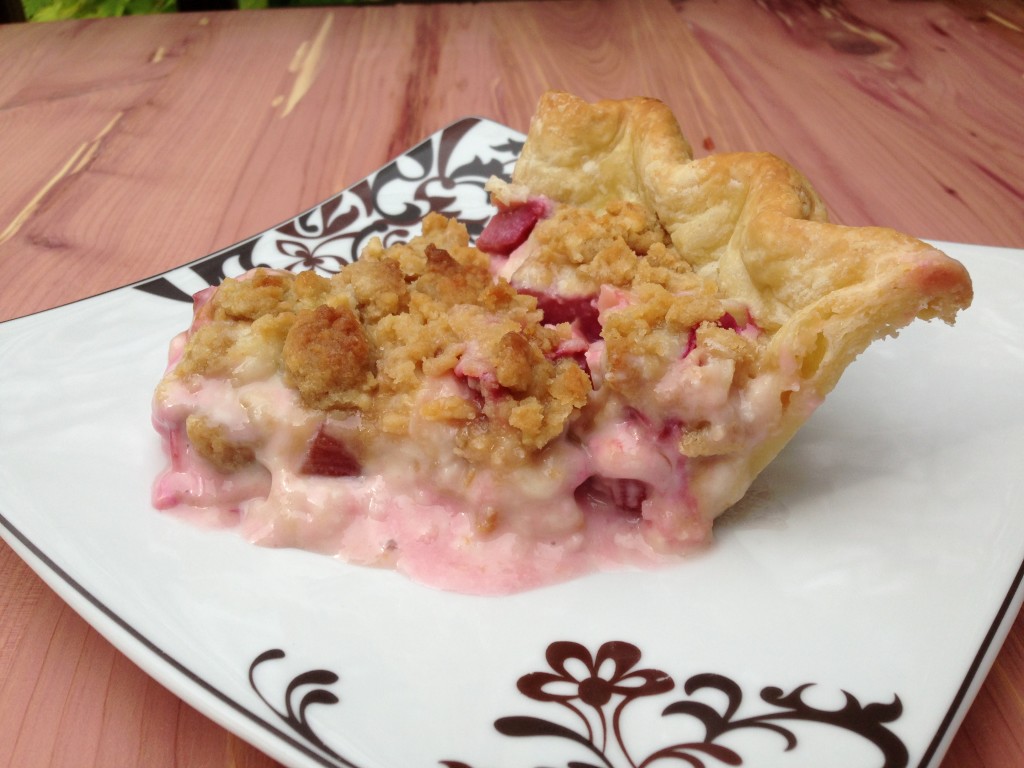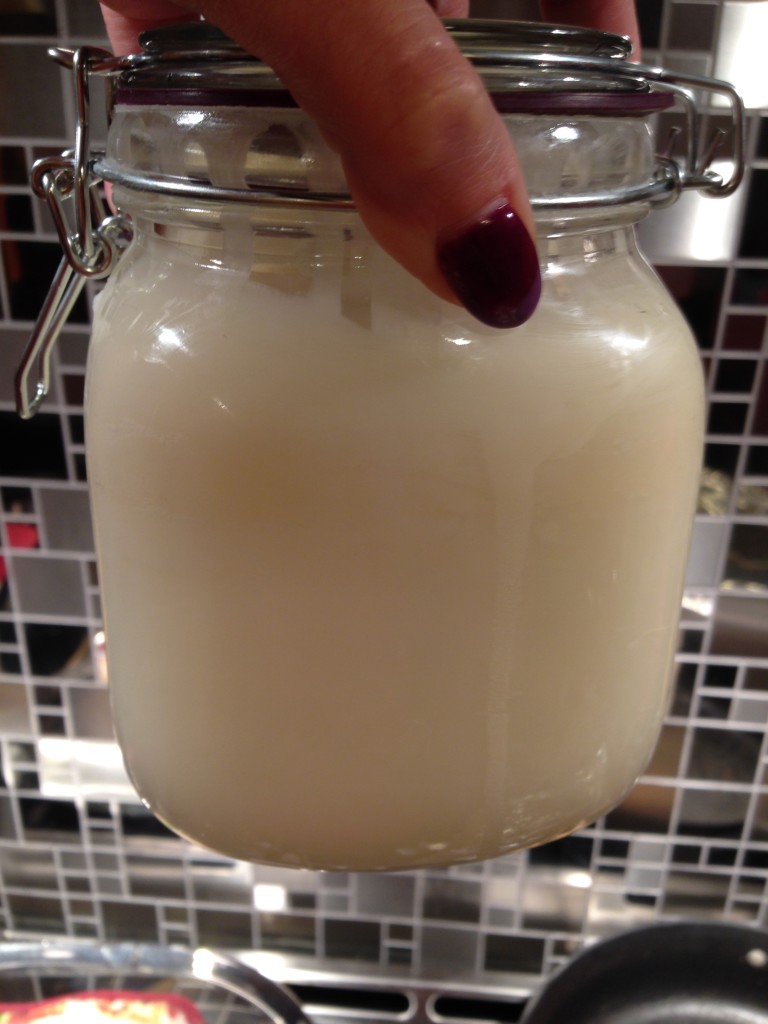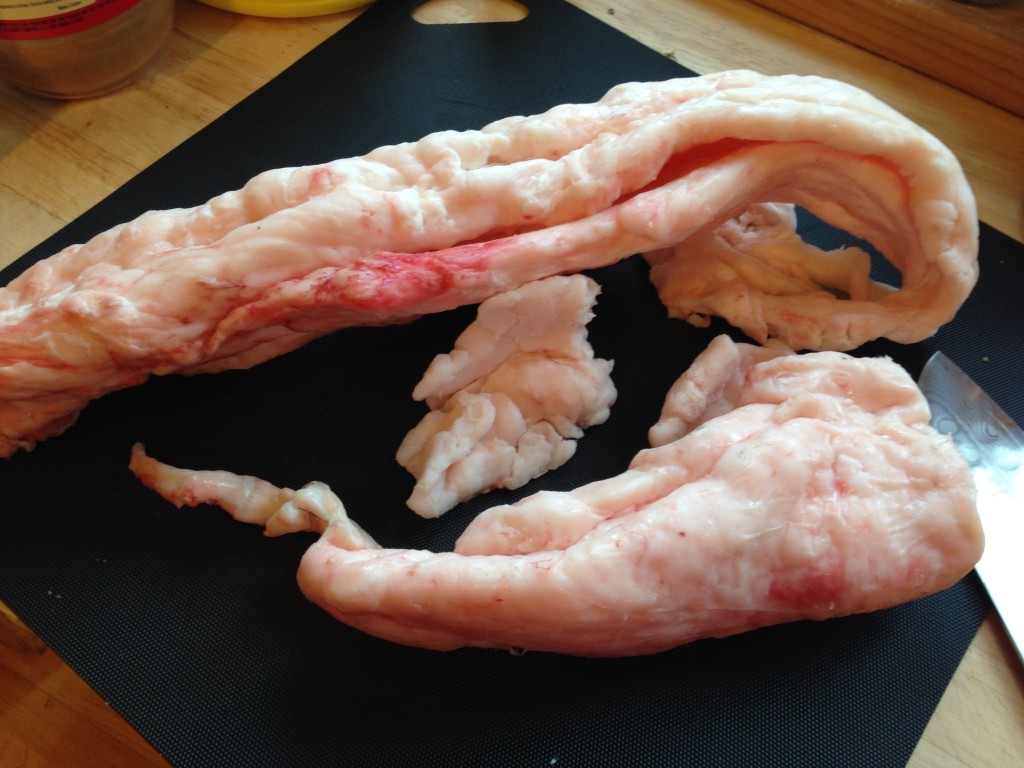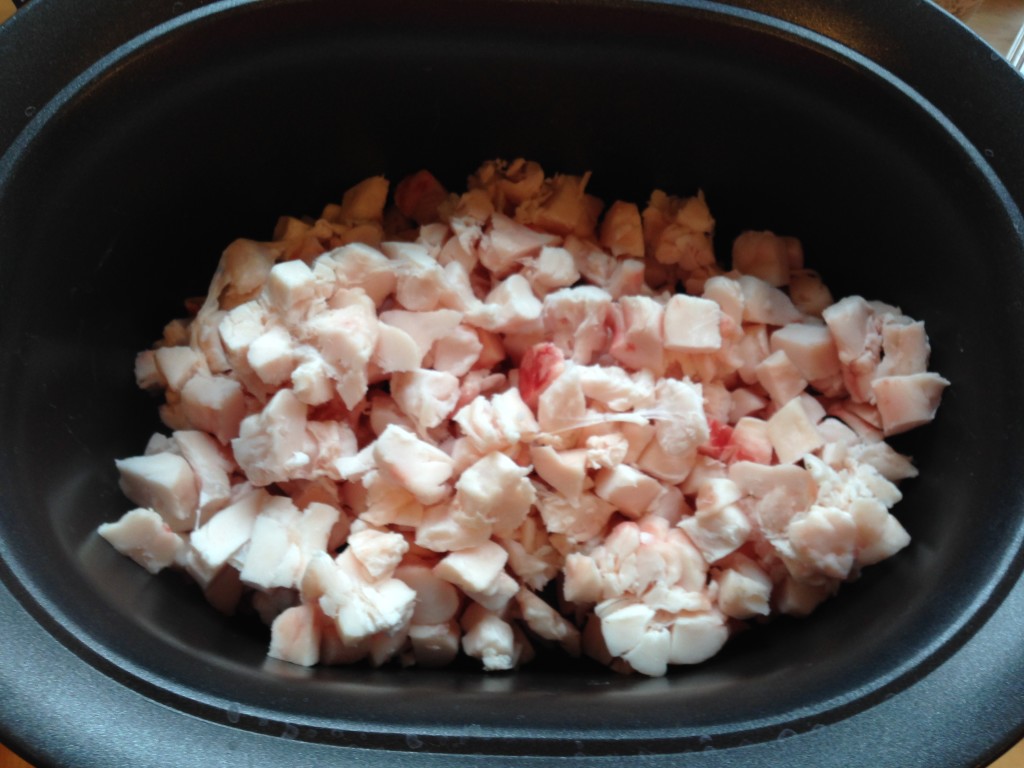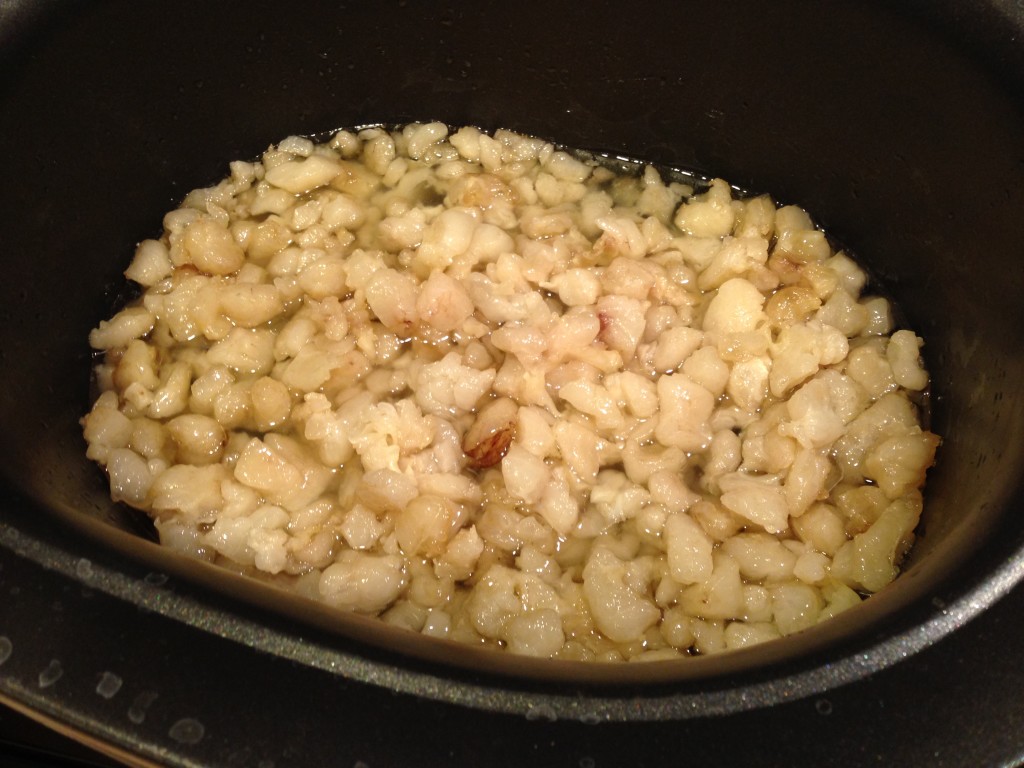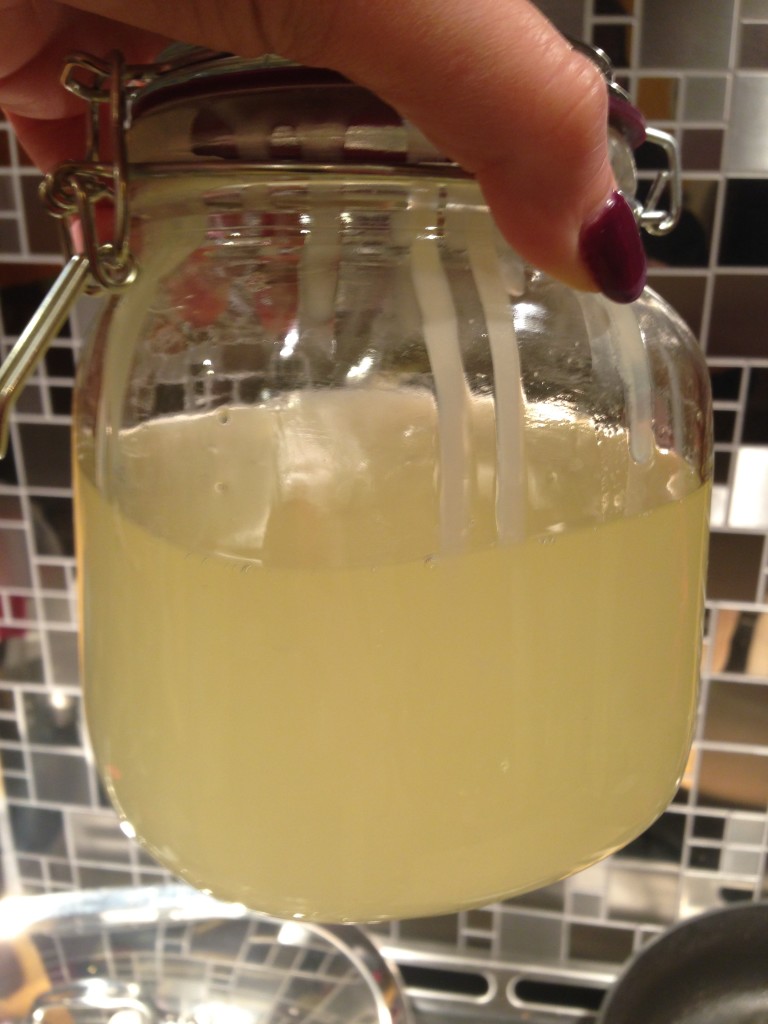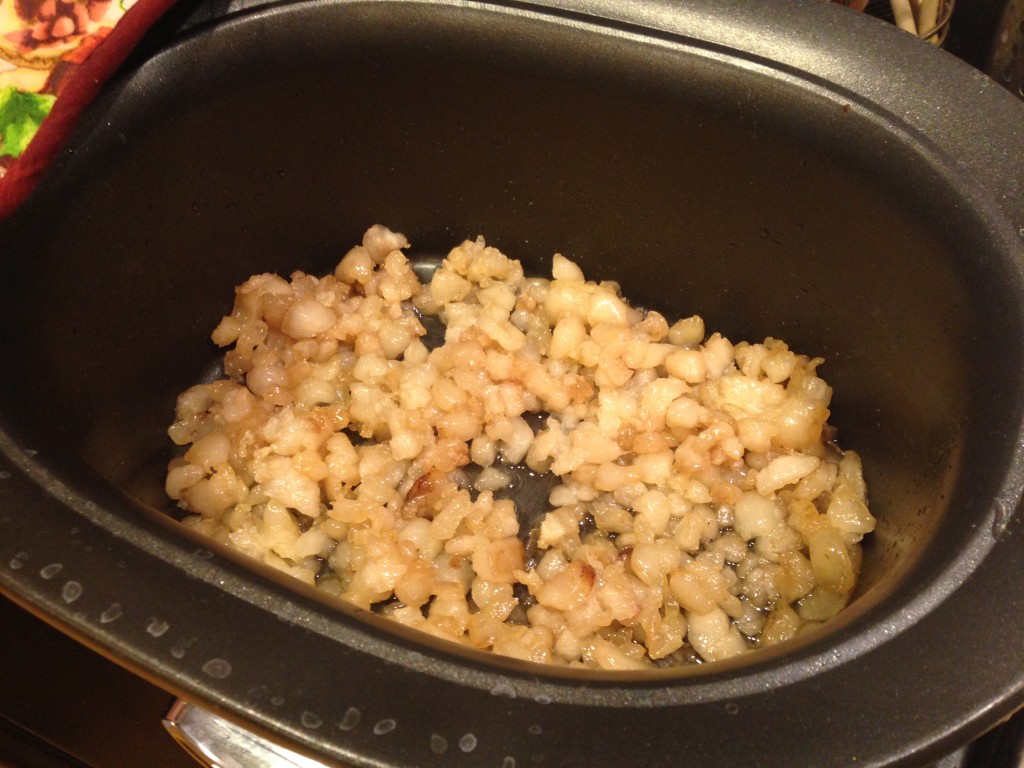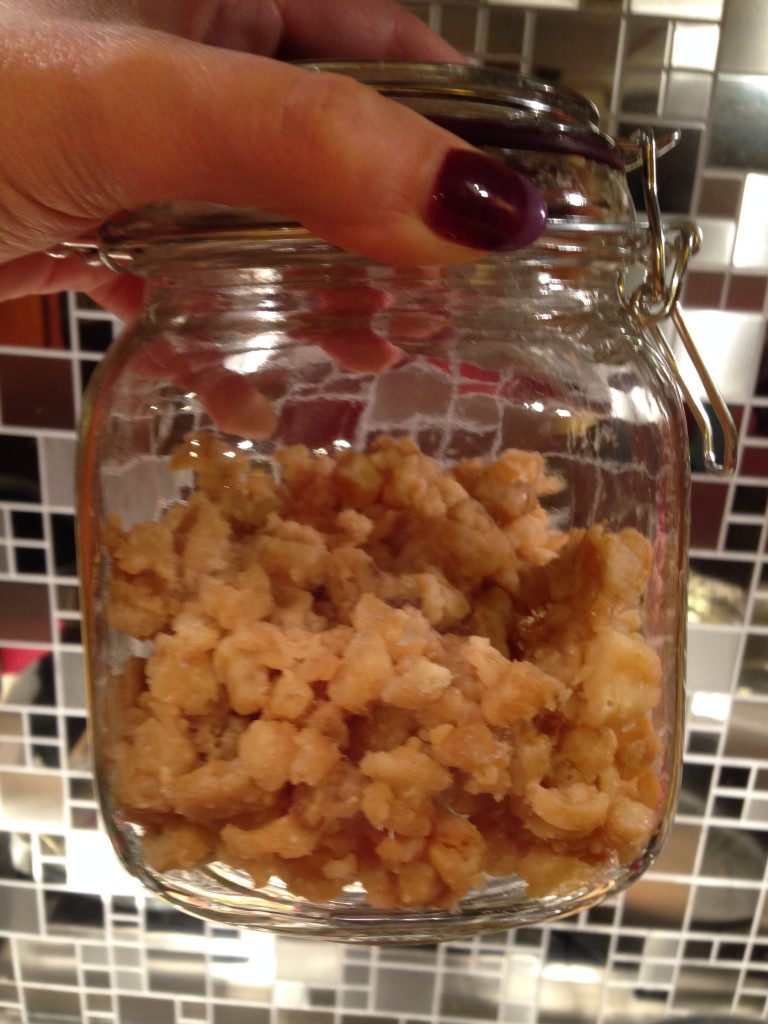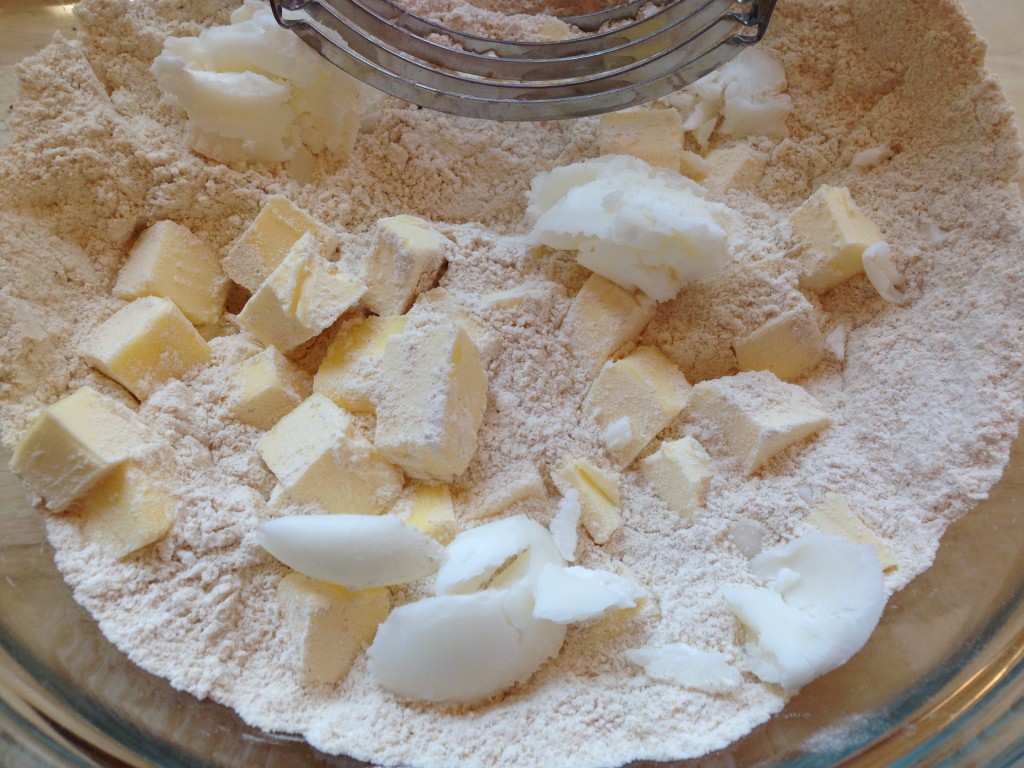Just look at that beautiful pie! Jewel like pieces of rhubarb in a pink tinged custard with golden streusel. Gorgeous. But before we get into that, we need to talk about crust. Perfectly tender and flaky crust. And for that, we need lard.
I first discovered the wonders of using lard for baking in this recipe. It makes the flavor and texture of pie crust amazing, plus it’s so easy to roll out! It also has the benefit of being made from animal fat, which is not toxic like the vegetable oil used to make shortening. Unfortunately, the lard you can buy at the store is partially-hydrogenated, and that is nasty and bad for you. So, what to do? Render your own lard at home! It takes a while, but most of that time is hands off – just letting a slow cooker do it’s thing.
First you need to acquire some lard. I got mine from a local butcher shop. The best kind to use if you want pure, odorless lard is leaf lard – this is the lard from around the kidneys. If you can’t get your hands on that, back fat is an acceptable substitute. Get as much as you can (or as much as you can fit in your slowcooker).
Next, chop up the lard and place it in a slowcooker along with 1/4 cup water (you could also ask the butcher to grind it for you). The water will prevent the fat from scorching or browning, and will eventually cook off. Set the slowcooker to low and leave it uncovered for an hour.
At this point, the fat should have started to melt. Begin ladling off the fat into your container of choice. This allows the rest of the fat to render faster than leaving it in there. You could also pour the whole thing into a cheesecloth lined strainer (over a container, of course), and then return the lard to the slowcooker. Either way, continue to remove the rendered fat every half hour or so for several hours. There is no real time limit here, everybody’s slowcooker will work differently. Mine went for about 4 hours.
The rendered lard will look slightly yellow while it is warm. Once it is chilled, it will solidify into the pure white color.
Once the fat starts to show any color AT ALL – stop. You must not add this fat to your baking lard or it will have a meaty flavor. You can, however, continue rendering and add this fat to your savory fat container (like where you put bacon grease) for use in sauteing and frying.
And if you keep going until the lard becomes crispy, you will have cracklins. Which I am not really sure what to do with, to be honest, I’m not a big fan of them.
The lard will keep in the refrigerator for quite some time (sources vary from 3-6-9 months), even longer in the freezer (a year at least), and indefinitely if properly canned. So make as much as you can at once.
For the best crust ever, use butter and lard together (recipe below). I’ve tried all kinds of iterations of crust, and this method is by far my favorite. Forget the food processor (Martha Stuart loves it, but I’ve never gotten it to work for me) and invest in a pastry cutter.
Stay tuned for Rhubarb Sour Cream Pie later this week!
Single Pie Crust with Homemade Lard
2 cups flour
1 tsp salt
1/4 cup cold lard
1/2 cup cold butter, chopped
at least 1/4 cup ice cold water, up to 3/4 cup
Mix together flour and salt to combine. If you really want the absolute best, stick the bowl into the freezer for 10 minutes to get it really cold. Add scoops of lard and chunks of butter and cut together with a pastry knife until butter pieces are no larger than small peas. I like to get in with my hands towards the end to break up larger pieces of butter.
Add 1/4 cup of water and mix together. Continue adding water until the dough is just able to come together and be rolled into a ball. I use about 3/4 cup water total. Form the dough into a disk, wrap in plastic, and refrigerate for 20-30 minutes.
Have plenty of flour on hand for rolling out the dough – you will be amazed at how easy it is!
One Year Ago – Grilled Halloumi & Quinoa Salad
Two Years Ago – Vegan Chocolate Stout Brownies
Three Years Ago – Pork Chops – 2 Ways
